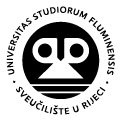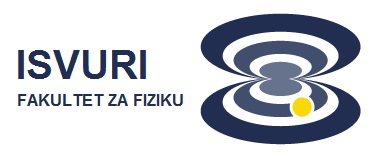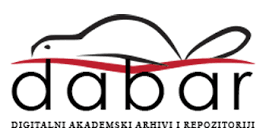Division of Theoretical Physics and Astrophysics
Scientific research in field of astrophysics is theoretical and observational. It includes investigation of atmosphere and circumstellar envelopes of various types of stars and measurement of gamma radiation by detection of Cherenkov radiation.
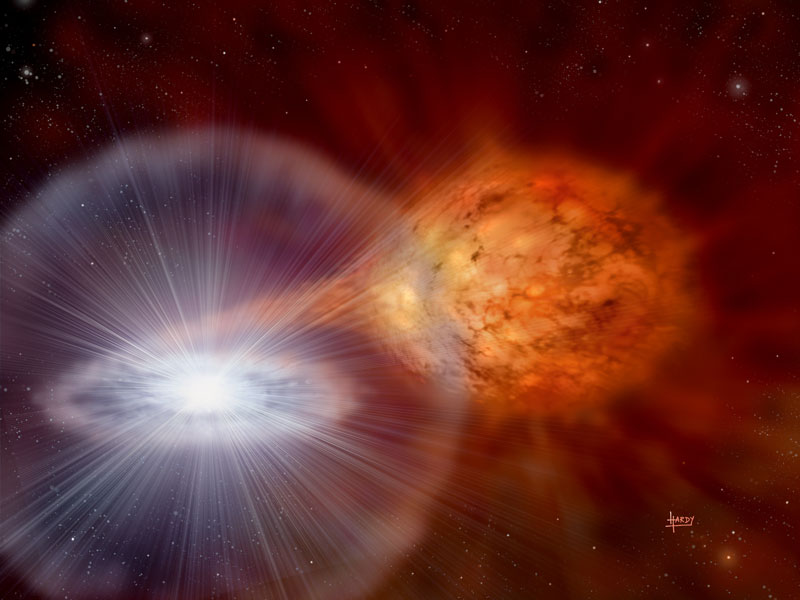 Spectroscopic and photometric investigation of stars in various evolutionary phases is focused on circumstellar envelopes that consist of gas and dust. We determine their chemical composition, physical properties, structure, geometry and evolution time of the relevant parameters. In order to analyze large amounts of observational data and to model complex stellar systems we apply existing and develop new computer codes (T. Jurkić).
Spectroscopic and photometric investigation of stars in various evolutionary phases is focused on circumstellar envelopes that consist of gas and dust. We determine their chemical composition, physical properties, structure, geometry and evolution time of the relevant parameters. In order to analyze large amounts of observational data and to model complex stellar systems we apply existing and develop new computer codes (T. Jurkić).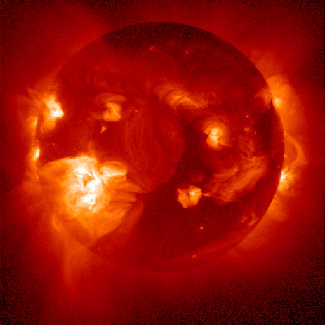 We investigate cataclysmic variable stars and especially symbiotic stars with spectroscopic and photometric methods. We study variations of helium lines of Sun’s chromosphere and coronal holes observed in microwave spectral range. Properties of the solar velocity field (rotational, meridional and azimuthal flows, their correlation and covariance, Reynolds stress) indicated by motions of the sunspot groups are investigated in order to reveale the transfer of the angular momentum from higher to lower latitudes and to maintain the current differential rotation profile. We study dependence of solar rotation on time and on the phase of the solar cycle, as well as the relationship between solar rotation and activity (R. Jurdana-Šepić, I. Poljančić-Beljan).
We investigate cataclysmic variable stars and especially symbiotic stars with spectroscopic and photometric methods. We study variations of helium lines of Sun’s chromosphere and coronal holes observed in microwave spectral range. Properties of the solar velocity field (rotational, meridional and azimuthal flows, their correlation and covariance, Reynolds stress) indicated by motions of the sunspot groups are investigated in order to reveale the transfer of the angular momentum from higher to lower latitudes and to maintain the current differential rotation profile. We study dependence of solar rotation on time and on the phase of the solar cycle, as well as the relationship between solar rotation and activity (R. Jurdana-Šepić, I. Poljančić-Beljan).Using Cherenkov telescopes MAGIC I and II located at Canary island La Palma (ORM) we observe scattering of gamma rays in Earth’s atmosphere. With analysis of light curves and gamma radiation spectra we model physical phenomena in extreme conditions: pulsars, black holes, active galactic nuclei and starburst galaxies. Faculty of Physics of University of Rijeka is co-owner of MAGIC telescope and accompanying experimental equipment (D. Dominis Prester, M. Manganaro, S. Mićanović and T. Terzić). For more details on our activities with MAGIC check out Laboratory for Astroparticle Physics.
.jpg)
Cherenkov Telescope Array Observatory (CTAO) is an initiative to build the next generation ground-based very high energy gamma-ray instrument. It will serve as an open observatory to a wide astrophysics community and will provide a deep insight into the non-thermal high-energy universe. The LST-1 (Large-Sized Telescope) prototype of the largest of the CTA telescopes (24m diameter) is currently being built at the ORM, La Palma. Scientists from nine countries, including Croatia, participate in hardware development and Monte Carlo simulations for the LST (D. Dominis Prester, M. Manganaro, S. Mićanović and T. Terzić).
Scientific research in theoretical physics covers a wide range of phenomena from Compton scattering on atoms, physics of lower-dimensional gauge and gravity theories, to thermodynamics of black holes and unification of forces.
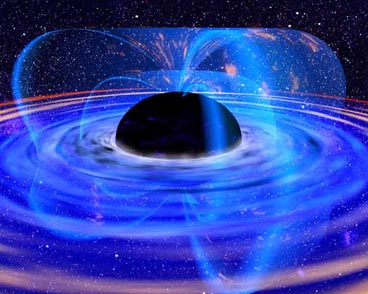 Research in elementary particle physics
Research in elementary particle physicsGravity still eludes a full quantum description for various reasons. It is therefore worth trying different alternative approaches to the description of gravity and other fundamental fields. One of these approaches relies on higher spin theory (where the spin is greater than 2). There are various indications that it could contribute to a better behavior of theoretical models at high energies. It is also interesting to observe the field theories that describe the class of "continuous / infinite spin particle" particles. Common properties of these theories are a certain amount of non-locality, an infinite number of degrees of freedom at each point of space-time and an unconventionally represented Lorentz group, properties that are not present in the usual "textbook" approaches to quantum field theories, and which could allow a more complete understanding of gravity and quantum field theories at high energies. (M. Paulišić in collaboration with P. Dominis Prester from the Faculty of Mathematics).
A line of research being pursued focuses on 2D and 3D Chern-Simons gravity and their conformal boundary theories (or an ensemble of such theories). On the gravity side, the research centers on solving the partition function and describing the geometry in non-relativistic regimes. Meanwhile, research on the boundary theories focuses on their role in describing the quantum phases of condensed matter models, particularly in the context of fractional quantum Hall states (A. Ranjbar).
We extended the study of Compton scattering on atom with independent particle model to double-ionised helium atoms with corrections from Coulomb and magnetic interaction. We also study scattering on two centres, for example scattering on positronium (Z. Kaliman).
Membership in International Collaborations
- CTAO - Cherenkov Telescope Array Observatory (D. Dominis Prester, M. Manganaro, S. Mićanović and T. Terzić)
- LSST - Large Synoptic Survey Telescope (T. Jurkić)
- MAGIC - Major Atmospheric Gamma Imaging Cherenkov (D. Dominis Prester, M. Manganaro and T. Terzić)
- SWGO (Southern Wide-field Gamma-ray Observatory) (J. Isaković, M. Manganaro, F. Reščić, T. Terzić)
Head of the Division of Theoretical Physics and Astrophysics:
Tomislav Terzić, associate professor
Research staff:
Dijana Dominis Prester, professor
Rajka Jurdana-Šepić, professor
Tomislav Terzić, associate professor
Marina Manganaro, assistant professor
Saša Mićanović, assistant professor
Ivana Poljančić Beljan, assistant professor
Arash Ranjbar Zidehi, assistant professor
Velimir Labinac, senior lecturer
Tomislav Jurkić, lecturer
Klaudija Lončarić, lecturer
Mateo Paulišić, postdoctoral researcher
Karlo Mrakovčić, PhD student
Filip Reščić, PhD student
Contact
FACULTY OF PHYSICS
UNIVERSITY OF RIJEKA
Ulica Radmile Matejčić 2
51000 Rijeka
Tel.: +385 51 584 600
Fax: +385 51 584 649
Email: fizika@phy.uniri.hr



